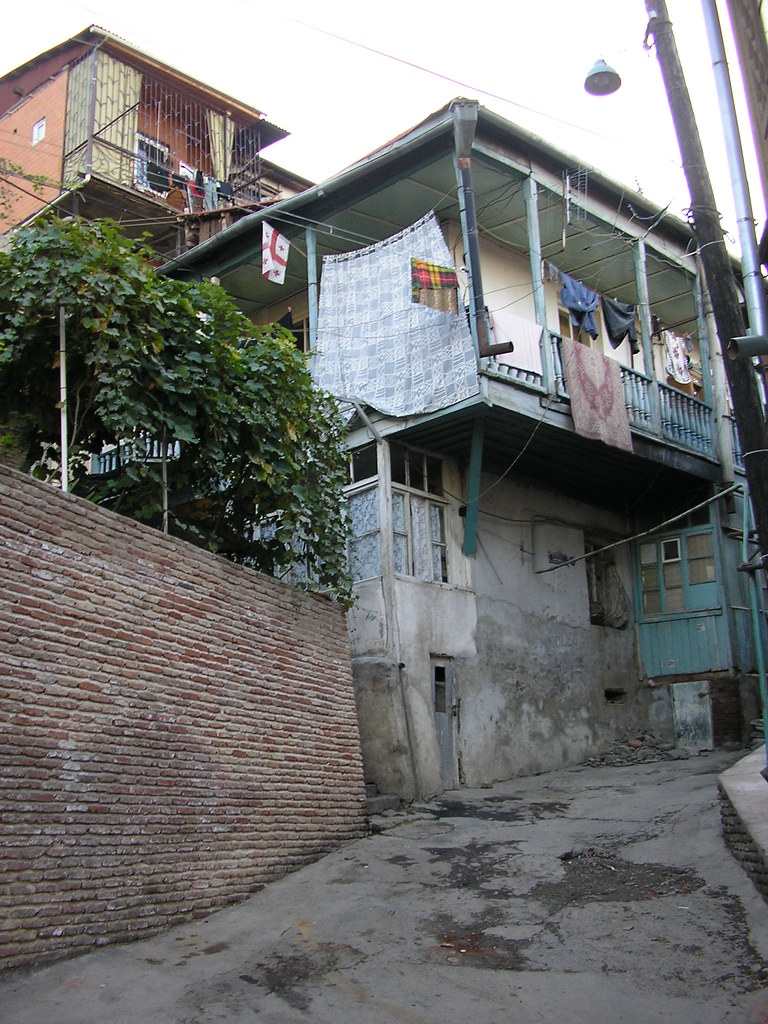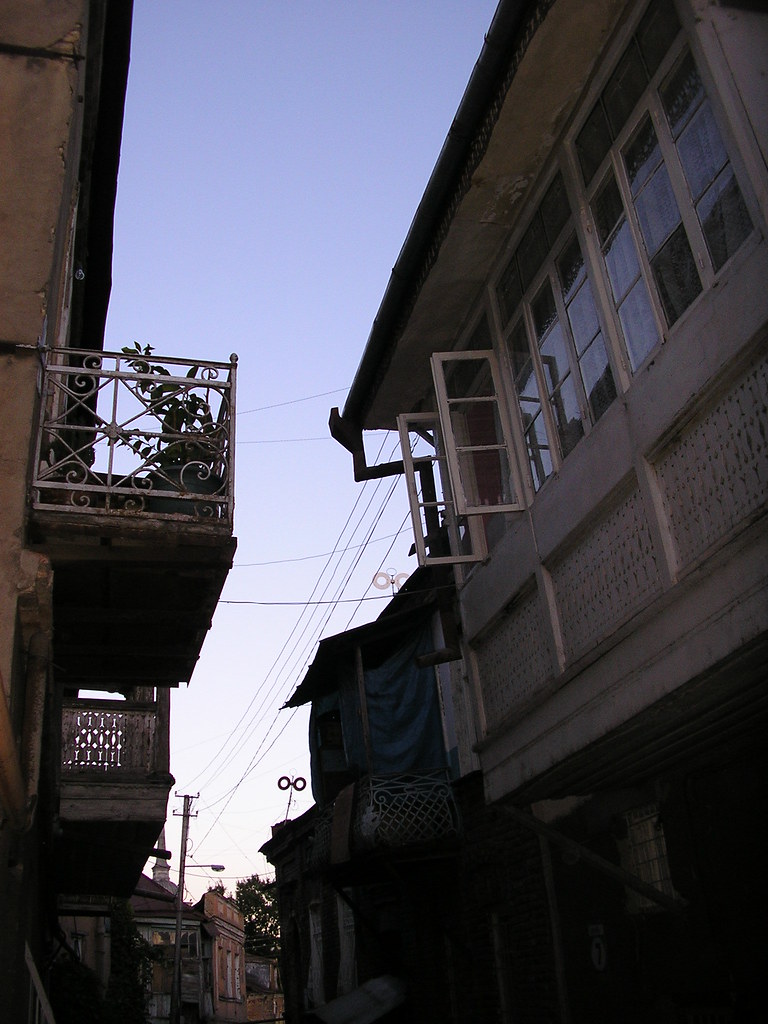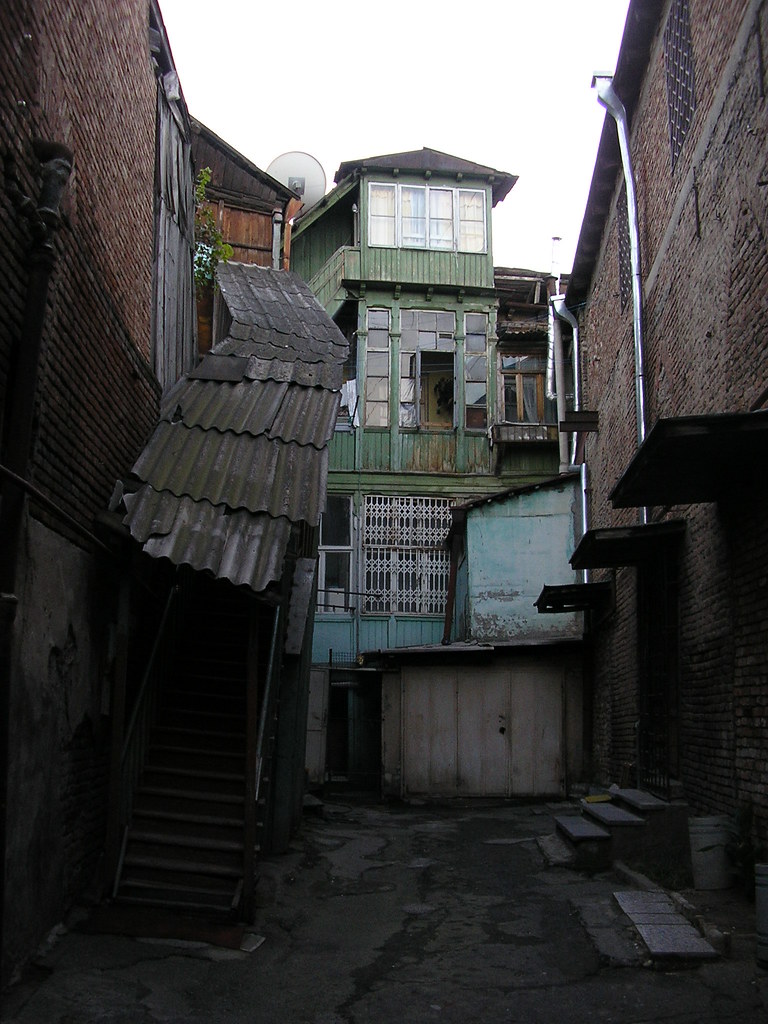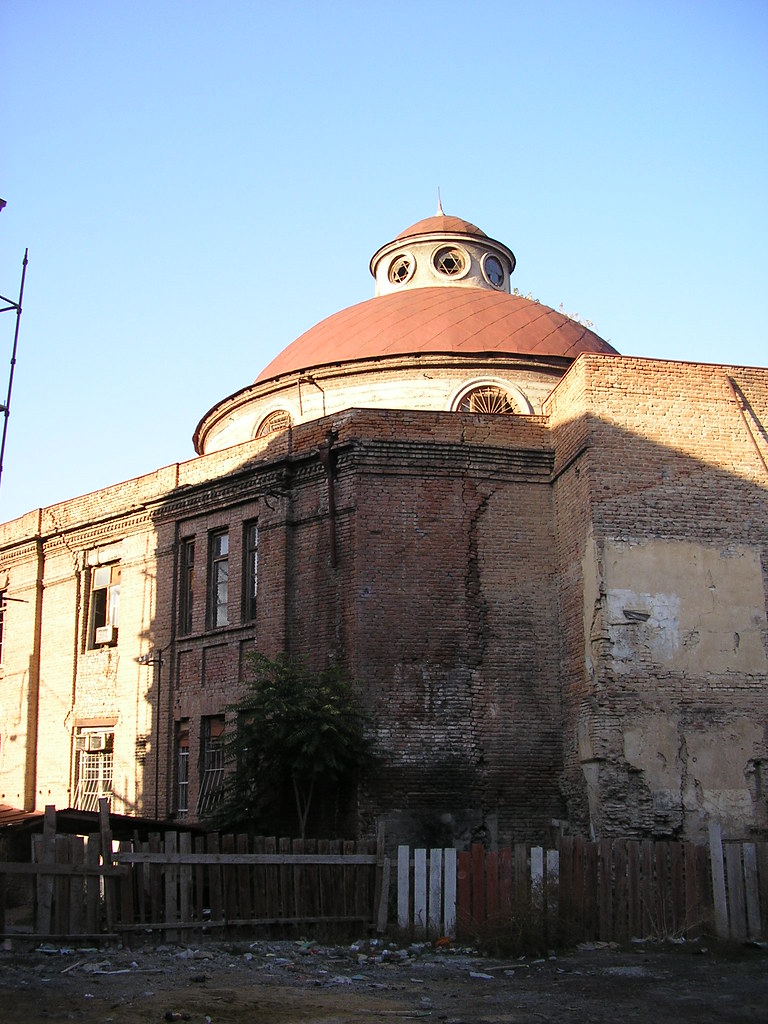Gestern war ich in dem alten Stadtteil Betlemi unterwegs. Was heißt unterwegs - eigentlich wohne ich da ja zu Zeit. Doch bisher habe ich das Gebiet nicht weiter erforscht. Enge, verwinkelte und zum Teil verwachsene Gassen lassen vermuten, dass man sich gleich in einem Privatgrundstück aufhält oder sogar bald in den Stuben der Bewohner angelangt ist. Zudem hat man das Gefühl, dass man die Orientierung verliert, oder man meint sogar, sich in einer Sackgasse zu befinden - doch plötzlich erschließt sich das Ganze und man steht wieder an einem vertrauten Ort.
Gehört hatte ich über die Jahre einiges über das Viertel. Ein Feuertempel soll sich hier befinden. Einige armenische und georgische Kirchen, und auch eine Synagoge entdeckte ich, die jedoch auch stark renovierungsbedürftig ist. Häuser drücken hier gegeneinander. Andere werden durch abenteuerlich Eisenkonstruktionen abgestützt. Anderenorts wölbt sich das Mauerwerk wie ein Geschwürr hervor. Überall ziehen sich Mauern auseinander oder werden zusammengedrückt. Risse entstehen. Erdbebenschäden und die Sowjetzeit taten hier ihr übriges. Die Zeit und die Naturgesetze nagen gewaltig an dieser historischen Substanz. Hier muss dringend etwas getan werden! Hier und da wird zwar renoviert. Der Hammerschlag der Hausbesitzer scheppert durch die Gegend. Auf Regierungskosten werden zumindest erst einmal die Dächer dicht gemacht und rot angestrichen. Und die Bewohner selbst spekulieren wie Glücksritter, was die Wohnungspreise in abenteuerliche Höhen treibt. Da werden schon mal 120 000 Dollar für eine Bruchbude inseriert. Das kann aber auch mit den Strategien der Baulöwen zu tun haben. Neubauten lohnen sich auch hier in Tbilisi.
Andererseits habe ich nicht das Gefühl, dass das historische Viertel zu stark heruntergekommen ist. Es hat seinen Charme immer noch bewahrt. Obwohl gerade viele ärmere Armenier hier wohnen und ein paar reichere Zeitgenossen sich ihr Grundstück aufpoliert haben, hat man noch nicht gänzlich das Gefühl, das alles verloren ist. Die UNESCO hat das Gebiet in ihr Weltkulturerbe aufgenommen und die Norwegische Regierung bemüht sich zusammen mit der Stadtregierung, das Viertel und die Bausubstanz zu retten. Wie das genau vonstatten gehen soll, weiß ich nicht.
Zahlreiche Probleme ergeben sich meines Erachten auch aus den unterschiedlichen Interessen, die hier sicher vertreten werden. Schließlich sind wir hier im Kaukasus. Es wird sich zeigen, ob man hier Kommpromisse eingehen kann, und gemeinsam für den Stadtteil eintritt. Sich in der Praxis auf die vielbeschworene gemeinsame Geschichte nicht nur zu berufen, sondern das in diesem Fall auch umsetzen, bedeutet, dass eben nicht von allen Seiten auf ein Vorteil hingearbeitet werden kann. Wenn es gelingt, das Betlemi-Quartier zu retten und auch nicht luxuriös tod zu sanieren, dann kann man hier etwas erleben, was die Welt wirklich noch nicht gesehen hat. Es könnte sich lohnen, davon zu träumen.
Text und Fotos am October 18, 2007 von Ralph Hälbig
mehr Fotos zu Bethlehem
mehr Fotos zu Bethlehem
Tbilisi 2007 (Set)
+++
in english:
The Revitalization Programme for the Betlemi Historic District, Old Tbilisi, Georgia
Since 2004, Norway assists UNESCO in the revival of the historic sites, in Georgia.Background:
The unique architectural heritage of the Betlemi District in Old Tbilisi, including urban vernacular architecture and religious structures, fell into severe disrepair following the collapse of the Soviet Union in the early 1990s, resulting in sub-standard living standards.
In response to this situation, the UNESCO Division of Cultural Heritage and the ICOMOS National Georgia Committee (ICOMOS Georgia) developed the ‘Programme for the Revitalization of the Historic Betlemi District of Old Tbilisi.’
Objective:
The Programme’s aim was to establish a sustainable model, using cultural heritage preservation and restoration as a way of promoting economic development through cultural tourism and community-based urban revitalization. Central importance was given to community participation in all stages of the project.
Project activities:
The project was implemented in two phases, during the period 2004/2005. All project activities were successfully undertaken, and included:
Phase I (2004) included preparing a conservation plan, intervention guidelines and a business plan for the district. In addition, concrete restoration and conservation works on historic houses and the District infrastructure to improve the living environment for local residents were undertaken. Other activities included:
Phase II (2005) involved implementing the activities foreseen in the Conservation and Business Plan, and giving priority to sustainable socio-economic development. They included:
Project results:
The project proved highly successful, and the results include the following:
Related Links:
historic cities "Revitalisation of Betlemi Quarter (Tbilisi Historic District) through Integrated Conservation Based on Community Participation" by Nato Tsintsabadze
International Council of Monuments and Sites -- Tbilisi Revitalisation of Betlemi Quartier



















No comments:
Post a Comment